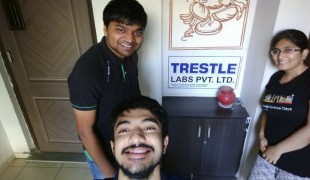- 4001
- 359
- 11
- 9
- 0
- Help Ukraine
About the solution
NonVisual Desktop Access (NVDA) allows blind and vision impaired people to access and interact with the Windows operating system and many third party applications.
Major highlights include:
- Support for popular applications including web browsers such as Mozilla Firefox and Google Chrome, email clients, internet chat software, music players, and office programs such as Microsoft Word and Excel
- Reporting of textual formatting where available such as font name and size, style and spelling errors
- Automatic announcement of text under the mouse and optional audible indication of the mouse position
- Support for many refreshable braille displays, including input of Braille via braille displays that have a braille keyboard
- Announcing controls and text while interacting with gestures on touch screens
NVDA has been translated by volunteers into more than 55 languages, and been used by people in more than 175 countries. NVDA is open source software, which means the code is accessible to anyone. This enables translators and developers around the world to continually contribute to its expansion and improvement.
The founders were able to work full-time on the project thanks to a series of corporate grants and individual donations. It has also won multiple awards.
Adapted from: https://www.nvaccess.org/
https://youtu.be/Ks7AwV_uxO0
This solution shall not include mention to the use of drugs, chemicals or biologicals (including food); invasive devices; offensive, commercial or inherently dangerous content. This solution was not medically validated. Proceed with caution! If you have any doubts, please consult with a health professional.
DISCLAIMER: This story was written by someone who is not the author of the solution, therefore please be advised that, although it was written with the utmost respect for the innovation and the innovator, there can be some incorrect statements. If you find any errors please contact the patient Innovation team via info@patient-innovation.com
-
-
717
-
0
-
17176

Timeless - A mobile app for Alzheimer's patients
COMMUNICATION: Communicating, whether by speaking, listening, or other means
CAREGIVING
Social interaction
Alzheimer's Disease
App (Including when connected with wearable)
AI algorithm
Online service
Cognitive impairment
Memory loss
Recovering cognitive function
Enhancing health literacy
Promoting self-management
Preserving Organ Function
Promoting inclusivity and social integration
Enhancing Mental Health
Improving Speech and Communication
To improve Treatment/Therapy
Caregiving Support
Internal Medicine
Neurology
United States
-
-
-
277
-
0
-
3774

Mother develops BeMe.ai, an app to track and support autistic individuals, their families and care teams
COMMUNICATION: Communicating, whether by speaking, listening, or other means
CAREGIVING
Autism
App (Including when connected with wearable)
Managing pain
Enhancing health literacy
Promoting self-management
Managing Neurological Disorders
Building Supportive Community Relationships
Promoting inclusivity and social integration
To implement a diagnostic tool
Enhancing Mental Health
Improving Speech and Communication
General and Family Medicine
Internal Medicine
Medical Genetics
Neurology
Pediatrics
Psychiatry
Canada
-
-
-
514
-
0
-
7252

Graduates team creates an app to help visually impaired in their education
Studying
Reading
COMMUNICATION: Communicating, whether by speaking, listening, or other means
Blindness
Assistive Daily Life Device (to help ADL)
App (Including when connected with wearable)
Online service
Vision problems
Promoting self-management
Promoting inclusivity and social integration
Improving Speech and Communication
To improve Treatment/Therapy
Raise awareness
Ophthalmology
India
-
 en
en